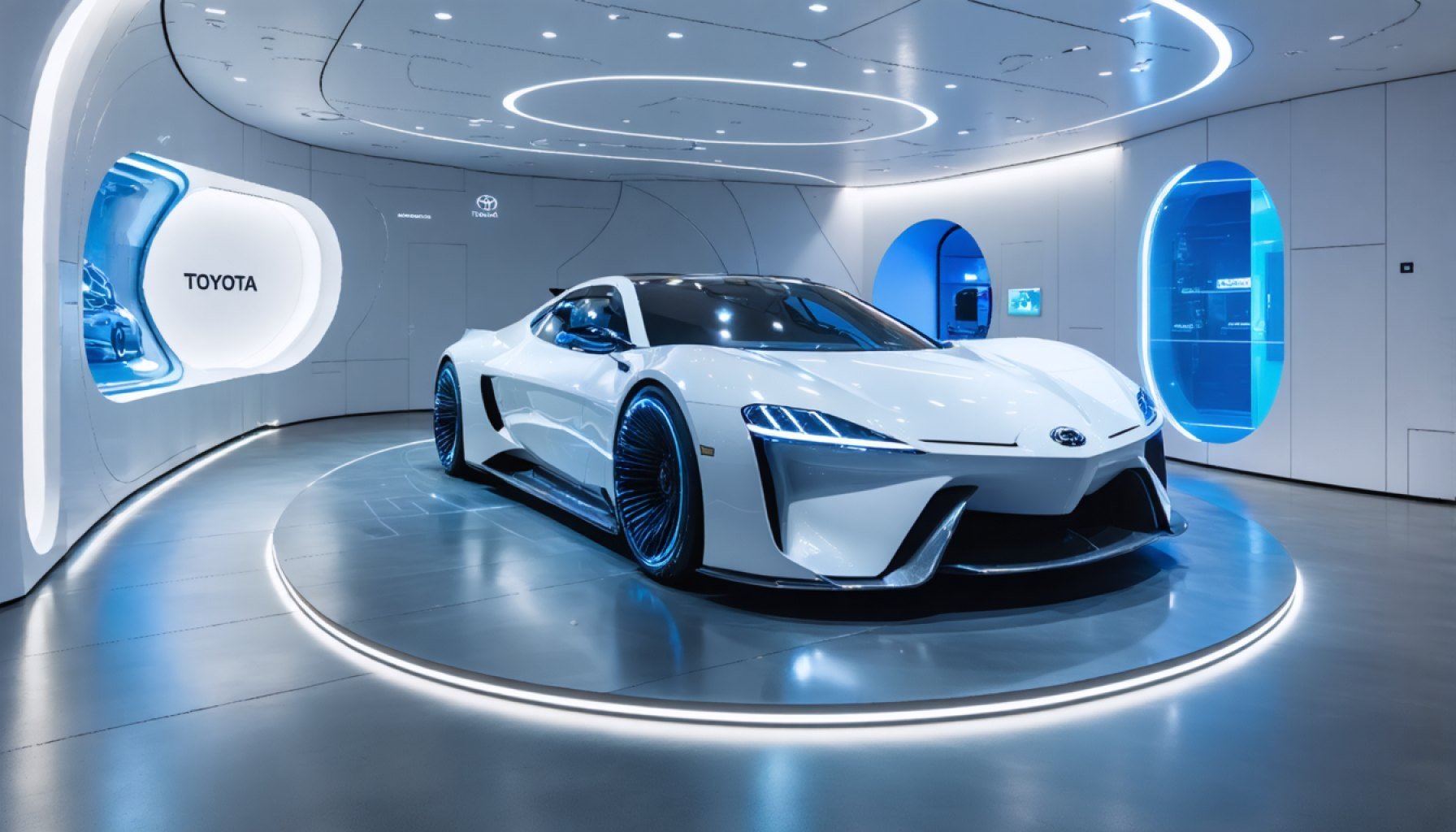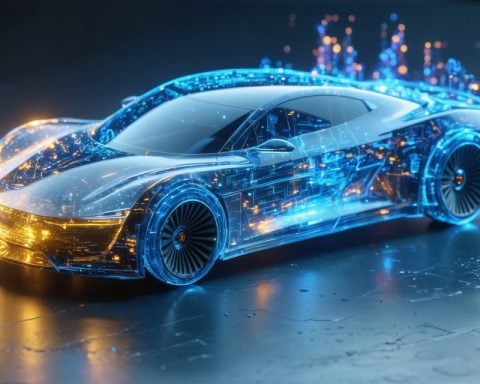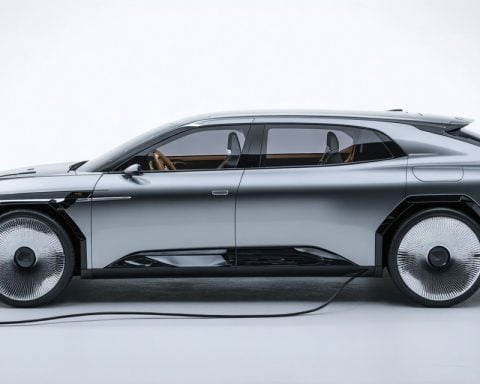- Woven City, near Susono, Japan, is Toyota’s innovative project aimed at integrating robotics, AI, and autonomous vehicles in a real-world setting.
- Unlike conventional smart cities, it emphasizes real-world testing over theoretical approaches.
- The city is designed as a “Living Laboratory,” focusing on future mobility, information flow, and energy transport solutions.
- The initial phase spans 47,000 square meters, with plans to expand to 294,000 square meters.
- Hydrogen power is central to the city’s energy strategy, showcasing Toyota’s commitment to sustainable energy futures.
- Employees and their families, the “weavers,” will actively participate in testing the interplay between humans and technology.
- Toyota’s substantial resources support the project’s ambition, aspiring to maintain a competitive edge against industry giants like Waymo.
- Woven City exemplifies Toyota’s dedication to proactive innovation, aspiring to lead technological advancements globally.
Nestled near Susono, Japan, Woven City unfurls as a visionary haven orchestrated by Toyota. This is not just a typical tech hub but a vast, immersive landscape designed to spur the next evolution of human interaction with technology. Immaculate streets weave through the city, forming a tapestry of innovation where robotics, AI, and autonomous vehicles converge to shape the future.
Woven City’s foundation lies upon an ambitious vision. It’s a realm where researchers and tech pioneers immerse themselves in a dynamic environment—a city-like stage where self-driving vehicles roam, seamlessly integrating with human life. Unlike conventional smart cities, this initiative prioritizes real-world testing over theoretical constructs.
Taking root on a former Toyota factory site, the city’s initial phase already spans 47,000 square meters, preparing for a future extension to 294,000 square meters. Woven City promises to be a “Living Laboratory,” architecting the future of mobility, information flow, and energy transport. From self-driving delivery vehicles to autonomous waste collection, it’s a symphony of forward-thinking solutions poised to redefine urban living.
Despite the groundbreaking advancements, Woven City remains a barren canvas awaiting its human element—the “weavers.” These pioneers, employees of Toyota and its partners, will inject life into the city, immersing themselves and their families in a grand experiment of technological coexistence. Toyota plans for these early residents to explore and refine the delicate interplay between human needs and digital capabilities.
In an intriguing twist, hydrogen emerges as the lifeblood of Woven City. While the electric vehicle wave sweeps across the globe, Toyota sets its sights on hydrogen power, underpinning its commitment to sustainable energy futures. Meanwhile, tech enthusiasts and industry experts, like Keisuke Konishi, marinate on Toyota’s audacious goals to rival industry giants such as Waymo.
The quest is not without financial might. Konishi astutely observes that Toyota harbors the resources to cultivate entirely new business realms, reinforcing the certainty of this ambitious technological utopia’s eventual success—even if profitability lingers in the distant mirage of tomorrow.
The experimental odyssey of Woven City serves as a powerful testament to Toyota’s relentless pursuit of innovation. While other futuristic endeavors around the globe falter or inch forward painfully, Woven City strides confidently, turning imagination into reality. The message resonates clearly: the future of technology is not passively awaited but actively woven into existence by bold, visionary hearts.
Stepping into the Future: Woven City’s Revolutionary Technological Milestone
Introduction to Woven City
Woven City, developed by Toyota near Susono, Japan, is more than a technological hub; it is a futuristic societal model that combines cutting-edge technologies with daily life. It is designed to serve as a dynamic testbed for innovations, particularly in robotics, AI, and autonomous vehicles. This city represents a significant leap forward in how humans might interact with technology in urban settings.
Features and Technologies of Woven City
1. Autonomous Mobility: The city is designed to accommodate self-driving vehicles that seamlessly integrate with pedestrian pathways and homes, heralding a new era of urban transport.
2. Robotics Integration: In Woven City, robots are expected to assist in daily activities, providing services from home assistance to complex industrial tasks.
3. Artificial Intelligence: AI systems embedded within the city infrastructure aim to optimize energy use, manage traffic flows, and enhance security, making it a model for smart city planning.
4. Hydrogen-Powered Infrastructure: Toyota’s emphasis on hydrogen as a clean energy source is aimed at reducing carbon footprints and promoting long-term sustainability, differentiating it from many other electric vehicle-dependent cities.
How-To Steps for Becoming a ‘Weaver’ in Woven City
1. Partnership with Toyota: As the city is currently targeted towards employees and partners of Toyota, becoming involved requires aligning with the company’s projects or becoming part of their strategic collaborations.
2. Tech Integration Skills: Potential residents are expected to have a keen interest in technology integration and sustainability to contribute to the city’s innovative spirit.
3. Commitment to Innovation: Residents, or ‘weavers,’ need to have a commitment to exploring the interplay between technology and daily life, contributing to research and development.
Market Forecast and Industry Trends
– Smart Cities on the Rise: According to Grand View Research, the smart cities market is projected to reach a valuation of USD 873.7 billion by 2030, reflecting a significant trend toward technology-driven urban development.
– Hydrogen Economy Growth: With Toyota’s emphasis on hydrogen, the global hydrogen market is expected to grow, driven by increasing investments in clean energy solutions.
Additional Insights and Predictions
– Scalability and Global Impact: If successful, Woven City could serve as a scalable model for smart cities worldwide, setting benchmarks in urban planning and sustainable living.
– Cultural and Social Dynamics: As the city grows, it may provide insights into new cultural dynamics and social interactions shaped by technology, potentially influencing urban sociology and city planning.
Pros and Cons Overview
Pros:
– Real-world testing of futuristic technologies.
– Sustainable energy solutions.
– Opportunities for innovation and development.
Cons:
– High initial investment with uncertain immediate profitability.
– Limited initial accessibility to a broader population.
Security and Sustainability
– Data Security Measures: Advanced cybersecurity protocols will be crucial in protecting residents’ data and ensuring seamless operation of integrated technologies.
– Sustainability Goals: The city aims to be a model for sustainable living, reducing waste and optimizing resource use through technology.
Actionable Recommendations
– Stay Informed: Follow developments in smart city projects, such as Woven City, to understand future trends in urban living.
– Invest in Skills: Gain proficiency in AI, robotics, and sustainable technologies to participate in similar projects.
– Focus on Sustainability: Consider how personal and business operations might align with future sustainability trends.
For more information about Toyota’s innovative initiatives, visit Toyota.

















